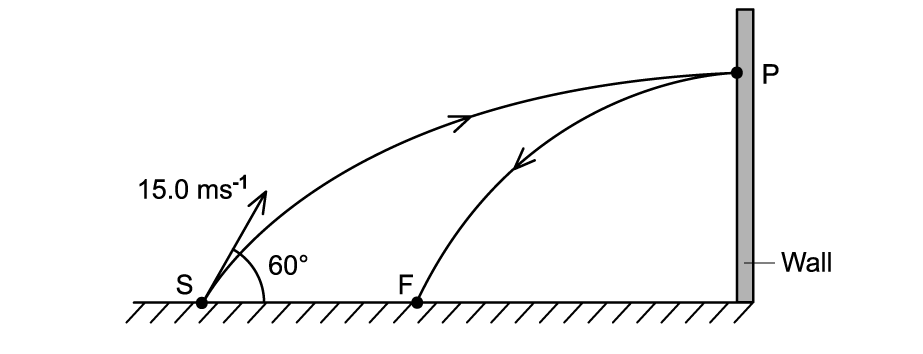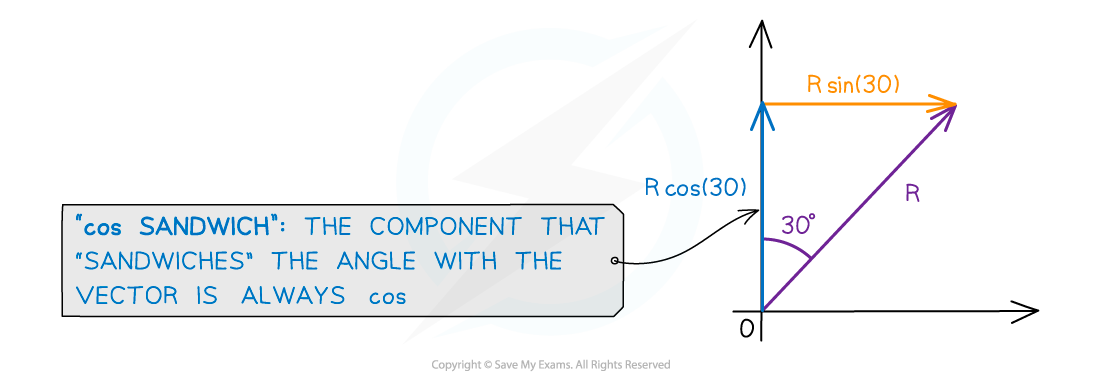Conservation of Momentum (Cambridge (CIE) A Level Physics): Revision Note
Exam code: 9702
The principle of conservation of momentum
The principle of conservation of linear momentum states that:
The total linear momentum before a collision is equal to the total linear momentum after a collision unless the system is acted on by a resultant external force
Therefore:
Total momentum before = Total momentum after
Momentum is a vector quantity, therefore:
opposing vectors can cancel each other out, resulting in a net momentum of zero
an object that collides with another object and rebounds has a positive velocity before the collision and a negative velocity after
Momentum is always conserved
For example:
Ball A moves with an initial velocity of
Ball A collides with Ball B, which is stationary
After the collision, both balls travel in opposite directions
Taking the direction of the initial motion of Ball A as the positive direction (to the right)
The momentum before the collision is
The momentum after the collision is
The minus sign shows that Ball A travels in the opposite direction to the initial travel
If an object is stationary, like Ball B before the collision, then it has a momentum of zero

The conservation of momentum for two objects A and B colliding and then moving apart
External and internal forces
External forces are forces that act on a structure from outside e.g. friction and weight
Internal forces are forces exchanged by the particles in the system e.g. tension in a string
Which forces are internal or external will depend on the system itself
A system with no external forces acting can be described as a closed or isolated system
Internal and external forces for a mass on a spring

The spring force is internal to the system because the spring is part of the system, whereas weight (the gravitational pull of the Earth on the mass) is external to the system
Collisions in one & two dimensions
One-dimensional momentum problems
Recall that linear momentum is p = mv
Using the conservation of momentum principle, it is possible to calculate the missing velocities and masses of components in a system
Elastic collisions are commonly those where objects colliding do not stick together and then move in opposite directions
Inelastic collisions are where objects collide and stick together after the collision
To find out whether a collision is elastic or inelastic, compare the amount of kinetic energy in the system before and after the collision
If the kinetic energy is conserved, it is an elastic collision
If the kinetic energy is not conserved, it is an inelastic collision
Worked Example
Trolley A has a mass of 0.80 kg.
Trolley A collides head-on with stationary Trolley B at a velocity of 3.0 m s-1.
Trolley B has twice the mass of Trolley A. The trolleys stick together.
(a) Using the conservation of momentum, calculate the common velocity of both trolleys after the collision.
(b) Show that the collision is inelastic.
Answer:
(a)
Step 1: List the known quantities
Mass of Trolley A, mA = 0.80 kg
Velocity of Trolley A, vA = 3.0 m s-1
Mass of Trolley B, mB = 2mA = 1.60 kg
Step 2: Determine the momentum before the collision
Since Trolley B was stationary before the collision, its momentum is zero
Step 3: Determine the momentum after the collision
Step 4: Equate the momentum before and after the collision using the principle of conservation of momentum
momentum before collision = momentum after collision
Step 5: Calculate the common velocity of both trolleys after the collision
(b)
Step 1: Calculate the kinetic energy of the system before the collision
Since Trolley B was stationary before the collision, its kinetic energy is zero
Step 2: Calculate the kinetic energy of the system after the collision
Step 3: State whether the collision was inelastic
The kinetic energy before the collision, 3.6 J, was greater than the kinetic energy after the collision, 1.2 J
Therefore, the kinetic energy of the system is not conserved, and the collision is inelastic
Examiner Tips and Tricks
If an object is stationary or at rest, its velocity equals 0, therefore, the momentum and kinetic energy are also equal to 0.
When an inelastic collision occurs in which two objects are stuck together, treat the final object as a single object with a mass equal to the sum of the two individual objects.
Two-dimensional momentum problems
Since momentum is a vector, in two dimensions it can be split up into its x and y components
See Scalars & Vectors for a reminder on resolving vectors
Worked Example
A ball is thrown at a vertical wall.
The ball is thrown from position S with an initial velocity of 15.0 m s-1 at 60.0° to the horizontal.
The ball hits the wall at position P and rebounds at a velocity of 4.6 m s-1
The mass of the ball is 60 × 10-3 kg.
Calculate the change in momentum of the ball as it bounces off the wall.

Answer:
Step 1: List the known quantities and assign direction
Initial horizontal velocity, vi = 15.0 m s-1 at 60.0° to the horizontal
Final horizontal velocity, vf = −4.6 m s-1
Mass of ball, m = 60 × 10-3 kg
Step 2: State the change in momentum equation
Step 3: Calculate the initial velocity
A change in momentum is only due to the horizontal velocity component for projectile motion
Step 4: Calculate the change in momentum
The answer should be negative because the ball is traveling in the opposite direction after it rebounds
Examiner Tips and Tricks
For problems in two dimensions, make sure you’re confident resolving vectors.
Here is a little trick to help you remember which component is cosine or sine of the angle for a vector R:

Resolving vectors with sine and cosine

Unlock more, it's free!
Did this page help you?